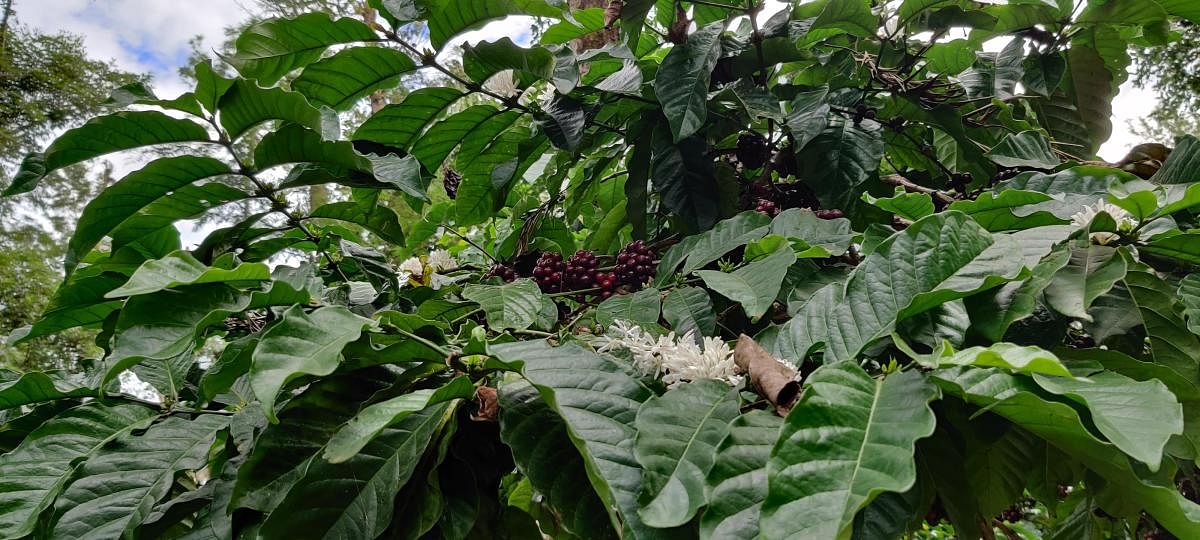

For long, Sakleshpur was seen as a pit stop for a coffee break on the Bangalore– Mangalore highway, a brief stopover while returning from Kukke Subrahmanya, Dharmasthala, and Mangaluru. But the Sakleshpur that existed beyond the cacophonic highway hid behind a veil. It is probably because of this that the place has managed to retain its pristine and raw appeal.
Emerald plantations stretching as far as the eye can see, gurgling streams, cascading waterfalls, underline the symphony of nature. Sakleshpur in more ways than one epitomises the poetic beauty that one associates with the Malanadu region of Karnataka.
As we walk through a verdant coffee plantation, we spot a coffee plant that presents a beautiful tapestry of colours. Jade coloured leaves frame snow-white flowers and blood-red coffee cherries, a treat to the visual senses.
The history, geography, and economy of Sakleshpur are enmeshed in coffee. The bewitching aroma of coffee lingers hauntingly around Sakleshpur. Coffee was introduced to Sakleshpur in 1843 when Fredric Green started growing coffee in a garden in one of the villages. This was long after Sufi saint Baba Budan had brought the seeds of the exotic plant from Yemen to nearby Chikkamagaluru in the 17th century. After initial hiccups, coffee took root in Sakleshpur and became its mainstay.
Coffee according to the planters is always a gamble as it is susceptible to the vagaries of weather.
Sakleshpur today grows two varieties of coffee, Arabica and Robusta. The predominance of Robusta has increased over the years owing to its robustness.
Sakleshpur, which is perched on the Western Ghats, is a UNESCO World Heritage Site and a biodiversity hotspot that consists of two dichotomous regions.
On the one hand, you have Hethur located on relatively level land and Hanbal perched higher up in the hills. Hanbal is the region that has spawned many homestays attracting visitors to experience a slice of the nature and culture of Sakleshpur.
“As a Malnad coffee planter, hospitality is in our blood,” says Chirag, a coffee planter and homestay owner. It is this spirit and also the need for alternative revenue options that have seen many plantations come up with homestays throwing their doors open to travellers looking to spend time with nature. But the coffee planters of Sakleshpur are wary of the dangers of over-tourism and the impact it may have on the fragile ecology of the region.
Sakleshpur is a pristine family getaway, a place where parents can teach their children to connect with nature. It is a place that retains its earthy charm, be it in its culture, heritage, or cuisine.
Apart from nature treks and plantation tours, Sakleshpur has heritage sites like the Manjarabad Fort that was built by Tipu Sultan in 1792.
Sakleshpur is also one of the places that the government is promoting as an ecotourism destination under the Dekho Apna Desh initiative.
Located just 220 kilometres from Bengaluru, Sakleshpur promises a slice of paradise in coffee land, an unalloyed experience that is bound to be the best antidote for the systemic stress of urban life.